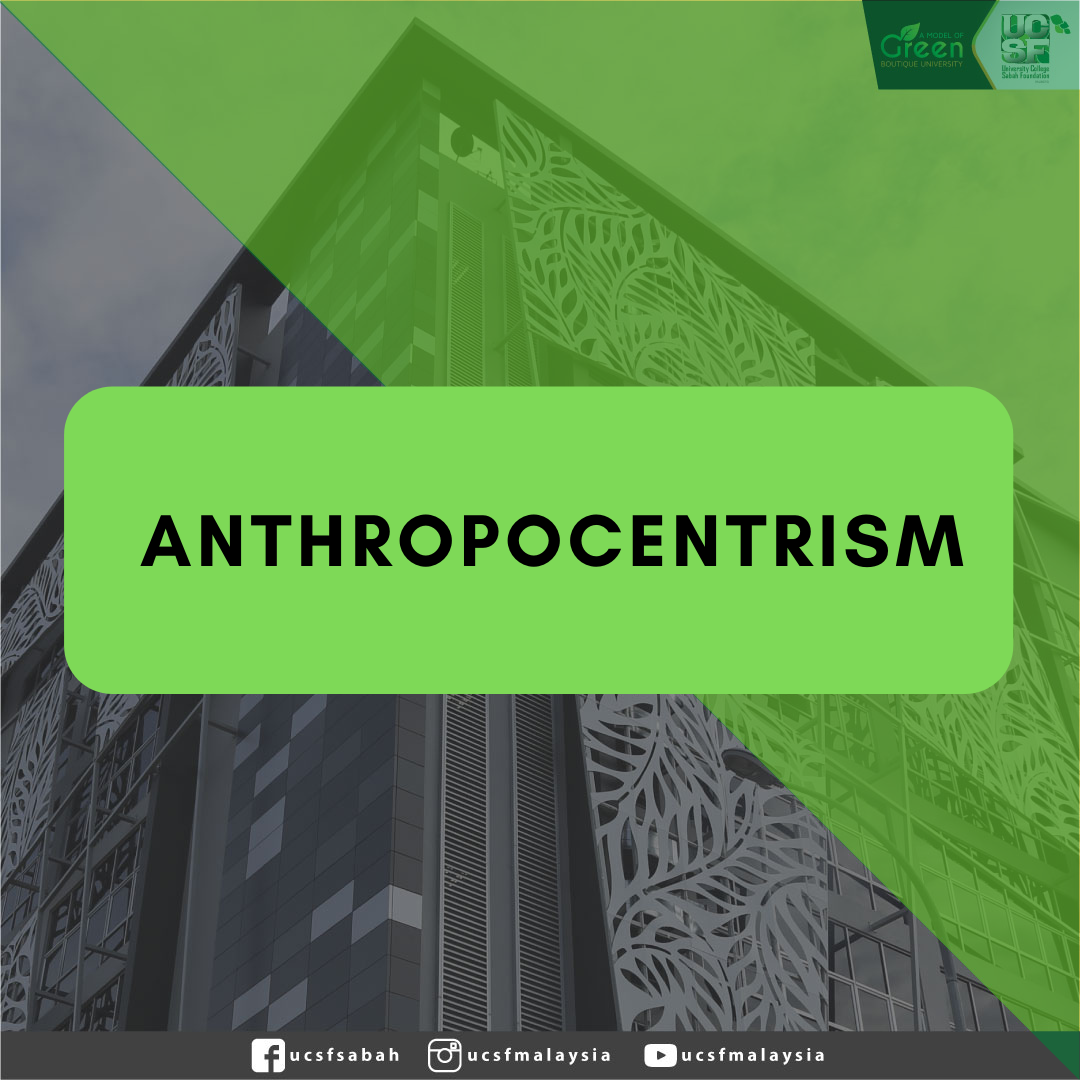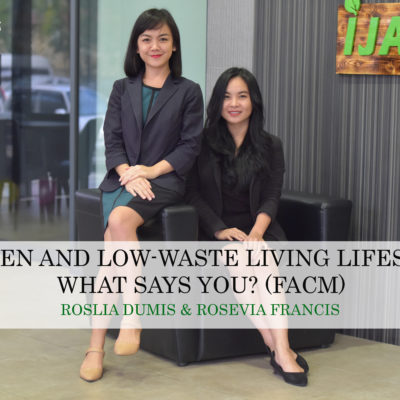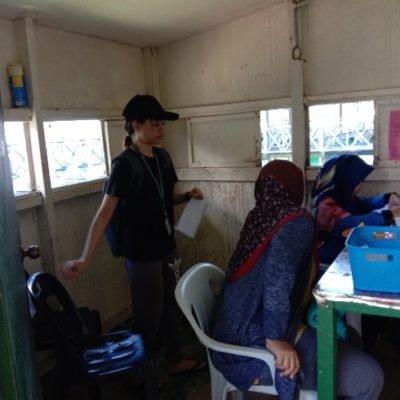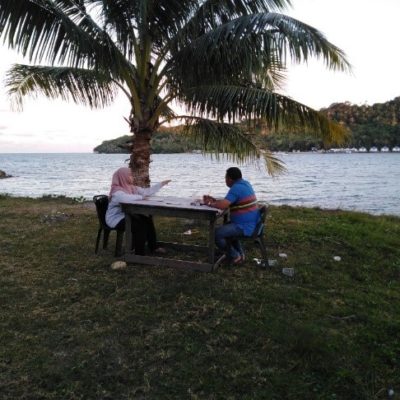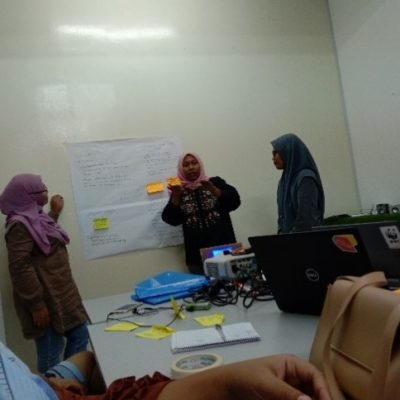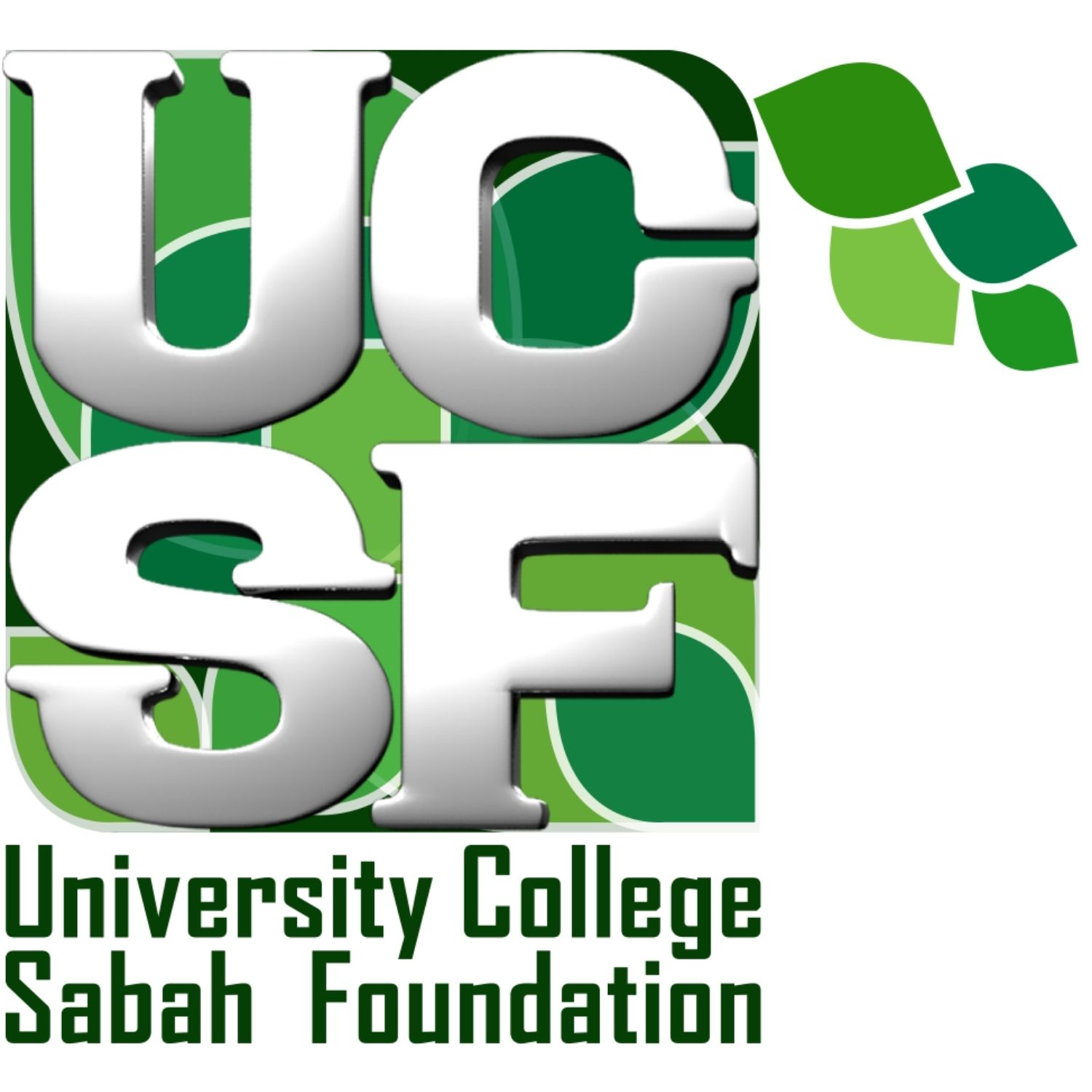Foreword
Today, we find ourselves living in a world filled with challenging circumstances. As humankind, we are embroiled in the struggle against long-standing issues such as the global environmental crisis, encompassing energy, environment, climate change, food and even financial security. And, in 2020, we find ourselves face-to-face with yet another enemy, novel and unprecedented – COVID-19. This pandemic not only caused a health crisis, but also showed its crippling and destructive effect on the economy. Countries all over the world had to go through a total lockdown or some form of social distancing to arrest the spread of the infection and its destructive nature of causing human fatality.
Read more
Laymen and experts alike view these issues as part of a global ecological crisis that continues to threaten the existence of humanity. Some, like the environmental activist and author, Elizabeth Kolbert (2014), even claim the possibility of a sixth extinction.
There is, therefore, an undeniably critical need for us to address this dire issue of the survival of the human race and the other inhabitants on Mother Earth. Certainly, there have been concrete responses, including a concerted global agenda. Many approaches and actions have been implemented at various levels, some of which are outlined as part of the United Nation’s Sustainable Development Goals (SDGs).
While we acknowledge the numerous altruistic efforts that are already in motion, we are always thinking of other alternative approaches; shifting our thinking from the old ways of perceiving and understanding these complex problems, and formulating new creative approaches towards a comprehensive solution. As Einstein aptly stated:
“We can’t solve problems by using the same kind of thinking we used when we created them.”
Taking this cue we have pooled our resources and effort to come up with a positive and novel way of viewing the problems. We believe these problems are systemic in nature. As such they are not only complex, but also have features of interconnectedness and interdependency. Trying to find a solution requires more than critical and creative thinking. We believe systems thinking should also be engaged. Further, a closer engagement with nature should also be done, this time with a sense of humility and trying to learn the secrets and wisdom it has to offer. The hegemonic anthropocentric mindset, worldview and the values practiced should be re-evaluated, maybe even displaced.
At UCSF we would like to engage with what we view as an invigorating novel green concept and philosophy to address the global challenges and in coming up with concrete solutions.
UCSF Green Concept
Being natural, signifying positive competitive cooperation (coopetition), interconnectedness (rather than atomised), interdependency and possessing regenerative power, as well as being in equilibrium, working in harmony towards well-being of the ecosystem and thereby achieving sustainability.
UCSF Green Concept
We begin by asking a basic question, “What does Green symbolizes?” Among other traits, the colour and the notion associated with green also captures:
Read more
Nature
Green is intimately associated with nature. The very colour green itself portrays nature in its pristine state. Green is a colour rich with nuance. It is the primary hue of land and the seas. The luscious beautiful green colour has traditional remedial applications. These include allaying stressed, cluttered and tired minds. It has the portent mystical power to manifest and bring about calmness and beauty. To put this ancient philosophy into the world of modern-day practices, Ecotheraphy is now in vogue.
Read more
Plants
The reflected green colouration perceived by humans is that of vegetation, which covers a significant part of the Earth’s land mass. Plants are essential to the survival and livelihood of the ecosystems and the organisms that call them home; as plants sit at the very strategic base or the foundation of the food chain or pyramid, provide nutrients and give shelter.
Read more
Photosynthesis
Plants’ ability to provide food efficiently is due to photosynthesis; a process of capturing energy from the sun and transforming it into food for all living organisms on this Earth to harness. Without this strategic capture, the abundant solar energy available would not be beneficially utilized, especially for the purpose of maintaining the continuity of life on earth. Plants, algae and photosynthetic bacteria convert carbon dioxide in the atmosphere to form glucose. Glucose, a sugar that is also the simplest form of food, allows life at higher trophic levels in all ecosystems to survive and thrive. Additionally, oxygen is also produced to support the dynamicity of aerobic organisms.
These interactions exemplify the interconnectedness and interdependency among the inhabitants of the planet earth.
Read more
Regenerative power
As living organisms, plants have the ability to regenerate itself. At the individual level, this process of ‘self-healing’ is something inherent and natural. This phenomenon can be seen at the tissue level and the community level. One example that we are familiar is that plant communities can revive even at the aftermath of massive destruction. It can bring to life land masses, laid bare due to the changing climatic cycle. On lands, plagued by drought, the very presence of water sources invigorates seeds, that have been lying dormant to germinate and bring forth new life.
Read more
Coopetition
In the natural ecosystem we observe the phenomenon of competition for survival. Both intra and inter-species competitions are a feature in the Darwinian natural selection; it is an environmental pressure to select out the best fit (adaptation) for the survival of organisms. This is the dominant view especially in explaining the process of biological evolution.
However, biological life is not dominated by competition per se. On the contrary, there are also many examples of cooperation or collaboration. Symbiosis is the term that describes forms of these cooperative relations. Different organisms live in close associations with one another, even inside one another (e.g. bacteria in our intestines, microbiomes). In symbiogenesis, there are even benefits of intimate sharing, i.e. increasing the gene pool, through the continuous mutual support of two different species living together as host and parasite.
Similarly, there is also the existence of what is termed as cooperative competition: coopetition. In this case, we can observe two organisms collaborating together to successfully adapt to the pressures of the environment. Coopetition also serves to bring about the maturing and stability of the ecosystem. This collaborative feature seen among the participants of the ecosystem is beneficial both at micro and at the macro levels.
Read more
Diversity
Diversity is another feature that is overwhelming in nature. There are thousands of species and sub-species. At the genetic level. one can observe great diversity. It is a fact of life. However, this diversity is not chaotic or destructive in nature. Rather, it is another positive feature, especially when diversity is constructively moving in the direction of unity; unity in diversity. Diversity also brings stability in an ecosystem. We can see how the loss of biodiversity is becoming a threat to the continual survival of humans and other inhabitants of earth. Thus, diversity is looked upon as a natural asset.
Read more
Balance
Green also captures the balance in nature. We observe this salient feature in nature: maintaining its dynamic stability and resilience within limits. This we can observe at the microscopic level. Cells have inherent capacity to work towards homeostasis and its survival when its internal processes are disturbed. This also happens at the macro level such as in a local ecosystem, and even extending to the large scale of the global or planetary ecosystem. These can work their way to a homeostasis.
All the above features, in a comprehensive manner, culminates into a Green Concept. It encapsulates being natural, signifies positive competitive cooperation (coopetition), interconnectedness (rather than atomised), there being interdependency and possessing regenerative power, as well as being tempered with features that show balanced – equilibrium, working in harmony towards well-being, i.e. the well-being of the ecosystem. The final goal of the ecosystem towards sustainability is the well-being of the habitat (the biosphere).
Green Philosophy
A value system based on an eco-centric worldview. In this worldview intrinsic value i.e. the inherent value of each species is recognized. And human beings are not the domineering species, but a part of the ecosystem – as partners and stewards.
The UCSF Green Philosophy
This comprehensive Green Concept needs to be transformed into a Green Philosophy. To achieve that there is a need to integrate this Green Concept within a value system. Presently, our value system is entrenched within a dominant and hegemonic worldview; that of anthropocentrism.
Read more
Anthropocentrism
What is anthropocentrism? It is a worldview anchored on the concept of human beings as the centre, thus having the rightful authority in determining the value of others. In an anthropocentric worldview, humans occupy the highest order in the hierarchy of beings and things. All others which fall below us are enclaved by a value system determined by a set of values established by humans. A pertinent example in a human-centric value system, which is also the dominant materialistic economic view, is how we value diamonds. It is regarded as being more precious or valuable than water. It fetches an enormous price value in the market compared to water, even mineral water! Yet, in terms of real survival value humans can live without diamonds, but certainly not without water!
Read more
It is Based on an Eco-centric Worldview
Thus, there is a need to move away from the hegemony of anthropocentrism. Our Green Philosophy adopts a more balanced value system based on an eco-centric worldview. In this worldview, intrinsic value, i.e. recognizing the inherent value of each species, comes to the fore. Each species has a natural value by the mere fact of its existence. As such, we as human beings need to discover this intrinsic value from nature and the ecosystem.
Read more
It is One that is Interconnected but, yet Dynamically Independent
This eco-centric perspective, based on an ecological worldview, changes the position of humans within an ecosystem. We are left humbled and acknowledge that we are just a part of the ecosystem, not as separate beings. And most certainly not the domineering actors who conquer and find glory in taming the virgin natural ecosystem. We move from being ego-centric to being responsible partners and stewards. It follows that we should be aware of establishing a new relationship, based on an understanding of a reality of interconnectedness and dynamic interdependency. This new realization leads towards mutual respect and the creation of harmony, i.e. harmonization among participants, their actions and relationships in an ecosystem.
Further, there is the recognition of the extant rich diversity which naturally is moving towards none other than manifesting unity in purpose – the well-being of the ecosystem (biosphere). This complex and intricate web of relationships serve to catalyse the habitants within the ecosystem to function and collaborate in unison. This is how we comprehend sustainability under our Green Concept and Philosophy; sustaining all in its myriad forms, nuances and relationships to bring forth long-term sustainable benefits and well-being for all.
Read more
Biophysically and Virtually Connected as One
As to the concept of ecosystem, it can range from a miniature, for example the human body or an organization, to the gigantic biosphere or even the larger universe. Further, the ecosystem also encompasses the natural (the biophysical reality) as well as the new dimension which encompasses human, bio-physical and technological interactions, an artificial reality known as the infosphere. Within the reality of the infosphere, i.e. created based on information, humans (known as inforgs – information carrying organisms) would be interacting with other information entities. More so, the pace of development of the infosphere is increasing rapidly. Its presence and impact are encroaching deeper into the biosphere, thereby changing and affecting humanity and other living organisms.
Being Neutral
Both worldviews, secular and faith-based, can be accommodated easily under our Green Concept and Philosophy. There is no need to create a conflict. Rather, there is ample space for harmonization.
UCSF Green Concept and Philosophy is Neutral
UCSF’ Green Concept and Philosophy is also neutral. What does it mean? One can adhere dearly to the secular-based worldview; believing that all living organisms that exist today have evolved from a common ancestor, a primordial cell. And humans sit at the apex of the hierarchy of the evolved beings. On the other hand, one can originate from a faith-based worldview. In this world of reality, everything and all beings come to existence as a result of creation; their origins are determined through Divine power. Both these worldviews can be accommodated easily under our Green Concept and Philosophy. There is no need to create a conflict. Rather, there is ample space for harmonization.
Advocating Life Long, Wide & Deep Learning
A 21st Century University which Advocates Life-long, Life-wide & Life-deep Learning incorporating the Sustainable Development Goals (SDGs)
UCSF: A Model Green University
University College Sabah Foundation (UCSF) is moving towards a model Green University based on its articulated Green Concept and Philosophy. It is firmly grounded on an eco-centric worldview that manifests harmony and wellbeing of the inhabitants and the ecosystem. We hope this new higher learning institution will develop and evolve, bringing forth a unique model of a Green University which will add value towards the global drive to create green institutions in a greening world.
Advocating Life Long, Wide & Deep Learning
Our Green Concept and Philosophy is also comprehensive enough to accommodate the United Nation’s Sustainable Development Goals (SDGs) as well as the 21st century expectations and challenges, especially in the field of education. UCSF is a strong advocate for lifelong, life-wide and life-deep learning. This is a culture we believe will not only assists us to quickly adapt to the challenges of a fast-changing world, but also sustain the institution to keep advancing. The combination of teaching-learning and experiential learning approaches, integrating knowledge, skills and competency is the way forward. At UCSF, this vision is captured in the form of a growing cone. It is three dimensional in nature and dynamic, always growing in tandem with the requirements of the changing world scenario.
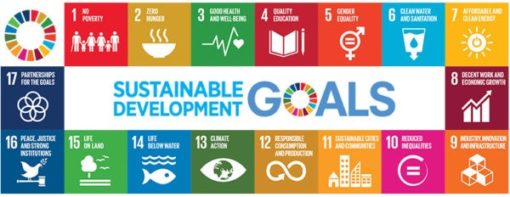
UCSF’ Green Concept and Philosophy, the realization of the Sustainability Development Goals and its commitment and advocacy to the 21st century skills is articulated in the image of a growing tree below. At the foundation, the roots, is UCSF’s Green Concept and Philosophy. The trunk represents the 21st century mindset and delivery approach, while the fruits of a strong thriving tree are the Sustainable Development Goals.
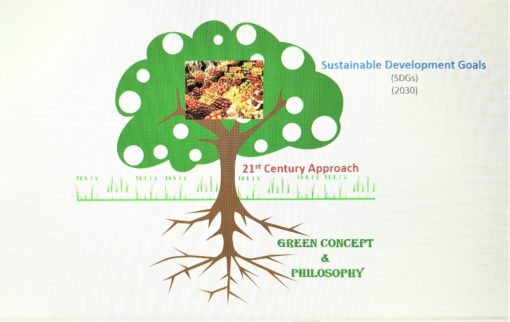
The UCSF Green Activities
Go Green And Low-waste Living Lifestyles : What Say You?
Roslia Dumis & Rosevia Francis










